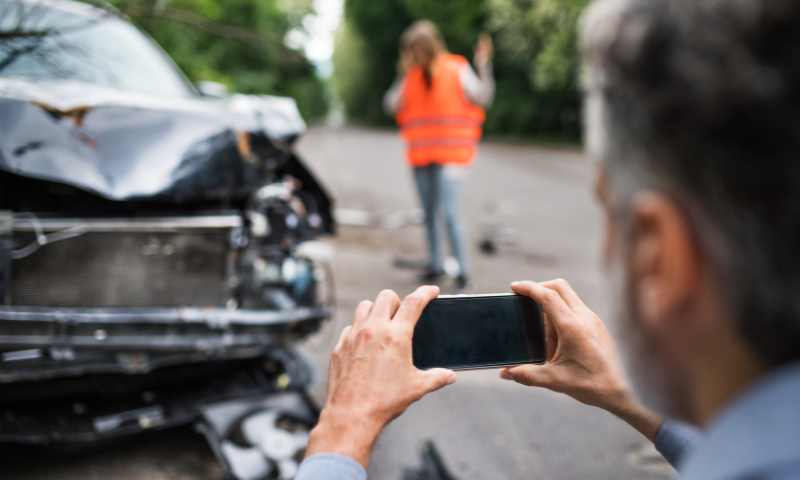Why Gathering Evidence After a Car Accident Is Critical to Your Case

Car accidents can be traumatic and life-changing events. In the aftermath of a collision, it can be challenging to know what steps to take to protect yourself and your legal rights. One critical step is to gather evidence at the scene of the accident to support your case, should you decide to pursue legal action.
If you or a loved one has been injured in a car accident, Held, Held & Held can help you. Our team of Brooklyn car accident lawyers can provide you with the legal advice and representation you need to protect your rights and seek the compensation you deserve.
Types of Evidence
After a car accident, gathering evidence is essential to support your case.
There are many types of evidence that you can collect to strengthen your case, including:
- Physical evidence — This includes any physical objects at the scene of the accident that can help prove your case, such as damage to the vehicles, skid marks on the road, or debris from the accident.
- Eyewitness testimony — Statements from people who witnessed the accident can be invaluable evidence. Eyewitness testimony can help establish what happened, who was at fault, and the extent of the damages.
- Police report — A police report is an official document that provides details about the accident, including the time, location, and parties involved. It can also include witness statements, a diagram of the accident scene, and a preliminary determination of fault.
The Role of Evidence in a Car Accident Case
In a car accident case, evidence plays a critical role in determining fault and damages. The evidence collected can help establish who was at fault for the accident and the extent of the damages suffered by the injured party.
A strong collection of evidence can significantly increase the chances of a successful legal outcome, whether that means a settlement or a trial verdict. Without sufficient evidence, it can be difficult to prove fault and damages, which can result in a less favorable outcome for the injured party.
The types of evidence collected, including physical evidence, eyewitness testimony, and police reports, can be used to reconstruct the accident, establish negligence, and determine the extent of the injuries and damages suffered by the injured party.
Tips for Gathering Evidence After a Car Accident
Gathering evidence after a car accident is crucial to support your case if you decide to pursue legal action.
Here are some tips for gathering evidence:
- Document the scene. Take photos and videos of the accident scene, including damage to the vehicles, skid marks on the road, and any other relevant details.
- Obtain eyewitness testimony. Eyewitness testimony can be critical in establishing fault and the extent of the damages. Ask witnesses to provide written statements, and make sure to get their contact information.
- Seek medical attention. It’s essential to seek medical attention after a car accident, both for your health and to establish the extent of your injuries. Medical records can be used as evidence in your case.
- Obtain a police report. Call the police to report the accident and obtain an official police report. The report can include valuable information about the accident, including a preliminary determination of fault.
Common Challenges When Gathering Evidence
When gathering evidence after a car accident, you may encounter some common challenges, such as:
- Difficulty in obtaining eyewitness testimony — Eyewitness testimony can be essential in establishing fault and the extent of damages. However, witnesses may be difficult to locate or reluctant to get involved. It’s essential to try to obtain eyewitness testimony, but if it’s not possible, other types of evidence can be used to support your case.
- Difficulty in obtaining a police report — A police report can provide valuable information about the accident, but the police may not respond to minor accidents or may not prepare a report. If you’re having difficulty obtaining a police report, you can contact the police department to follow up or consult with an experienced personal injury lawyer for guidance.
- Lost or destroyed evidence — Evidence can be lost or destroyed over time, so it’s crucial to act quickly to gather and preserve evidence. Document the scene of the accident as soon as possible, and make sure to keep all relevant records and documents.
Contact Held, Held & Held Today
Evidence in your personal injury claim is essential for getting full compensation for your damages. Physical evidence, eyewitness testimony, and police reports can all be used to establish fault and the extent of damages.
However, there are also common challenges that you may encounter when gathering evidence, such as difficulty in obtaining eyewitness testimony and police reports and the potential loss or destruction of evidence over time. By following the tips provided and working with an experienced personal injury lawyer, you can overcome these challenges and gather strong evidence to support your case.
Contact Held, Held & Held in Brooklyn for legal advice and representation after a car accident to ensure your rights are protected, and you receive the compensation you deserve.
Contact us today to schedule your free consultation.



